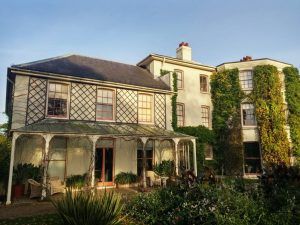Ben Garrod in The Conversation:
 It’s one of the greatest stories in science, right up there with Neil Armstrong’s small step on the moon and Jane Goodall’s overhaul of ideas on non-human relationships. When naturalist Charles Darwin first set foot in the Galápagos, an archipelago of volcanic islands in the eastern Pacific Ocean, he was just moments away from a revelation so significant it would change the way we look at life on Earth forever.
It’s one of the greatest stories in science, right up there with Neil Armstrong’s small step on the moon and Jane Goodall’s overhaul of ideas on non-human relationships. When naturalist Charles Darwin first set foot in the Galápagos, an archipelago of volcanic islands in the eastern Pacific Ocean, he was just moments away from a revelation so significant it would change the way we look at life on Earth forever.
His arrival in the Galápagos was a seminal point in a five-year voyage. Once there, finches and giant tortoises were believed to provide the eureka moment from which our understanding of evolution through natural selection would emerge, evolve and flourish.
At least this is the story most of us know. But it’s not quite the full story. For those willing to read his 1859 book On the Origin of Species, you might be surprised to discover that the Galápagos does not form its central premise at all. In fact, those iconic finches barely get a mention. In terms of revelatory moments in the Galápagos, the various tortoises and mockingbirds held more importance for Darwin.
More here.
